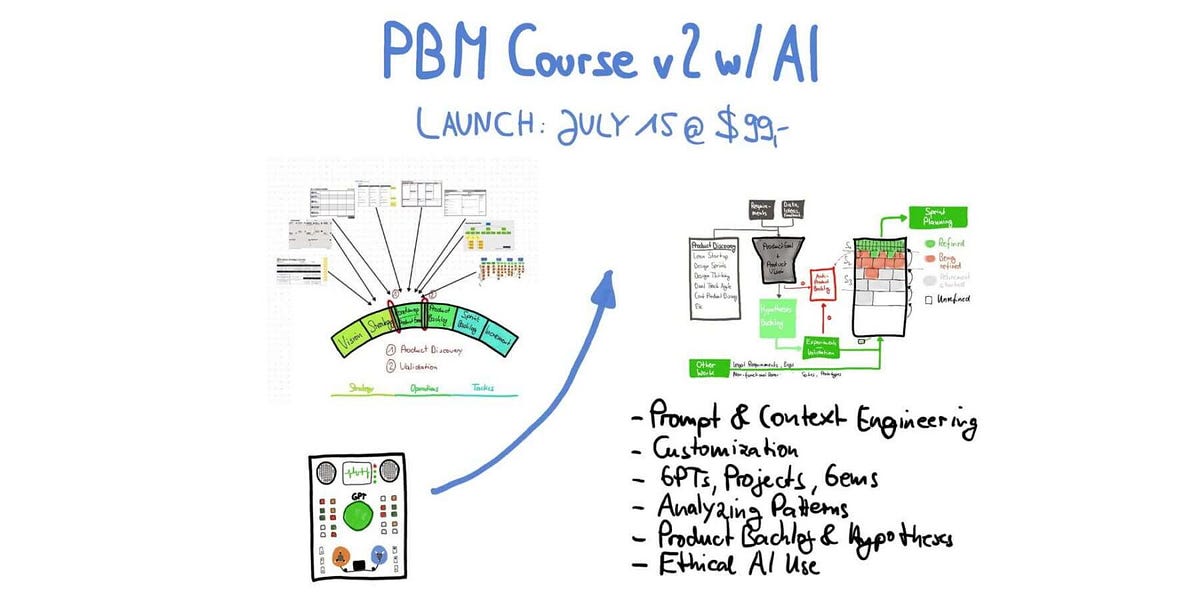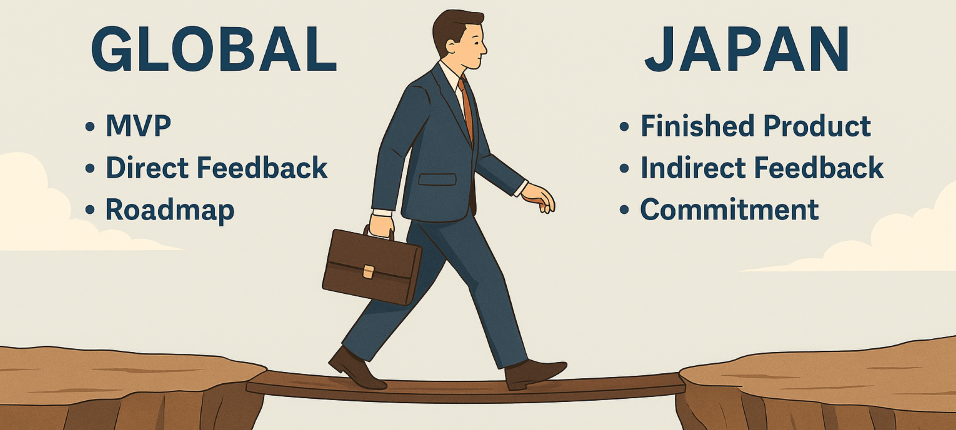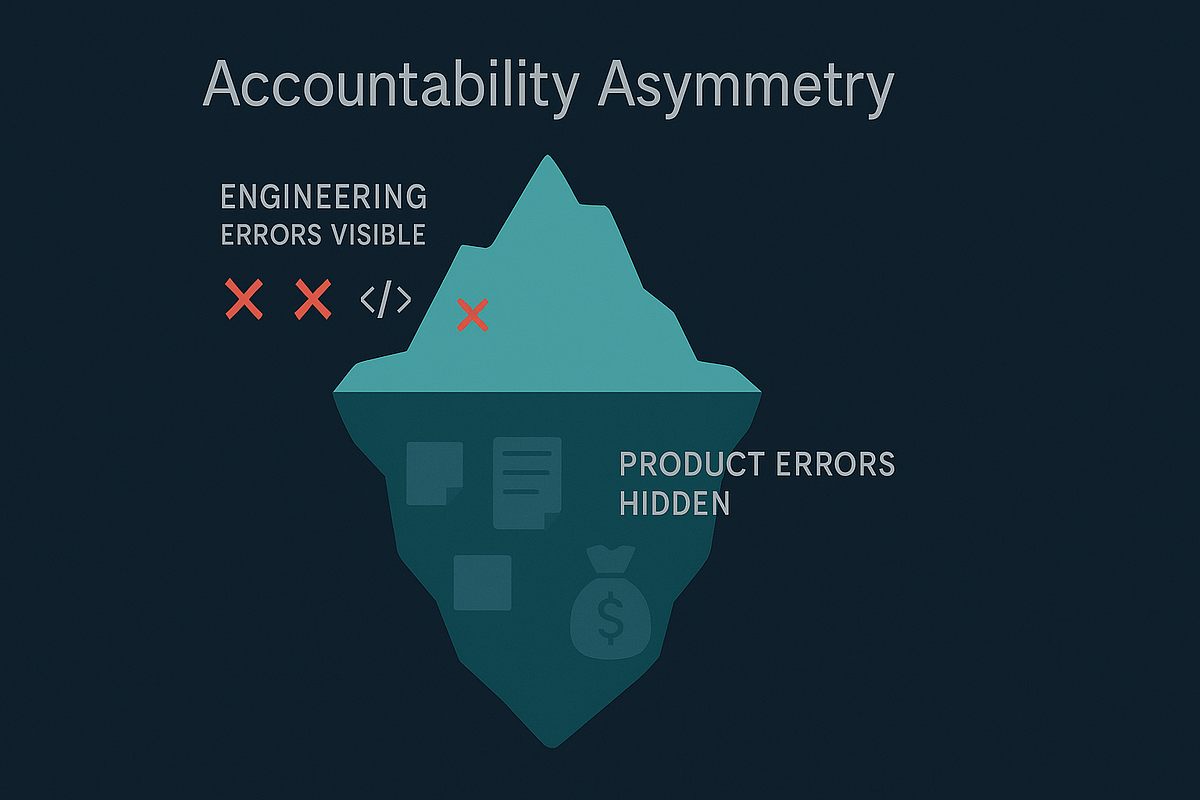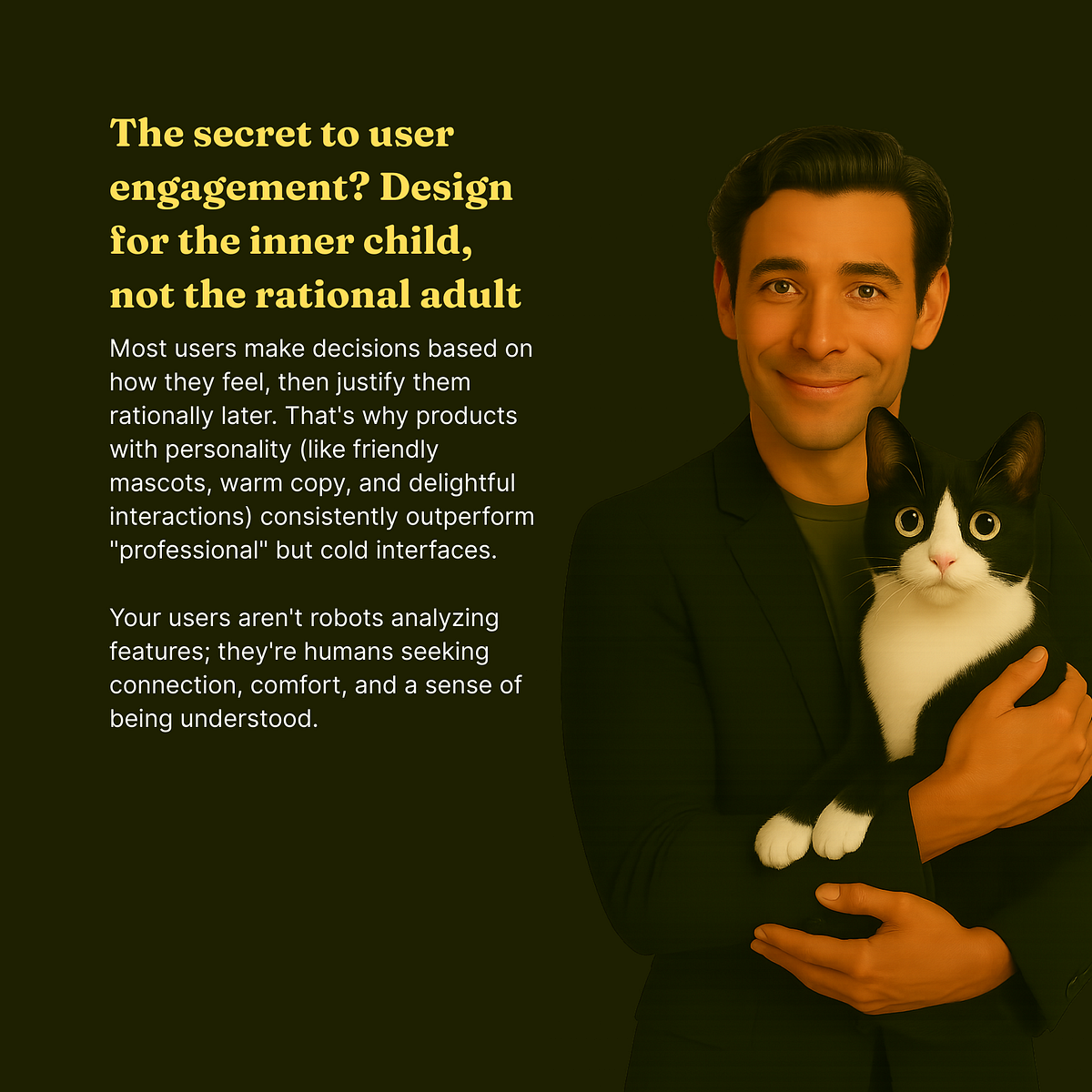Product Management News
Medium
192

Image Credit: Medium
The Advanced Product Backlog Management Course v2 with AI
- The Advanced Product Backlog Management Course v2 with AI focuses on distinguishing valuable AI applications from distractions in Product Backlog management.
- The course, set to launch on July 15, provides practical insights using HealthXYZ startup scenario and aims at enhancing AI proficiency in product management.
- It integrates generative AI not just for compliance but as a tool to improve design and ideas, and is designed to evolve into a complete Product Operating Model course.
- The course offers frameworks and AI-enhanced workflows that save time for Product Owners, improving stakeholder trust, and costs $99 with sign-up until July 22, 2025.
Read Full Article
11 Likes
Medium
331

Image Credit: Medium
Why MVPs Struggle in Japan
- MVPs, meant to test assumptions and gather early feedback, are often misunderstood in Japan as sloppy or incomplete, posing reputational risks for both vendors and customers.
- Cultural norms in Japan, emphasizing harmony and reputation, lead to hesitation around MVPs and a fear of failure, which is more deeply felt in a shame-based society.
- While agile methodologies can be effective in Japan, trust must be established first, and risk carefully managed from the beginning to navigate the cultural context.
- Japan stands out not for its fear of failure, but for the lack of mechanisms supporting second chances, making visible failures carry long-lasting consequences compared to other countries.
Read Full Article
9 Likes
Medium
197

Image Credit: Medium
The Accountability Asymmetry: Why Engineering Gets a Pager and Product Gets a Pass
- In the technology sector, there is a significant accountability asymmetry between engineering and product teams.
- Engineering mistakes lead to immediate, quantifiable issues, while product mistakes often cause slow, unmeasured deterioration.
- Engineering teams have clear feedback loops to address mistakes, while product teams rely on lagging indicators and subjective interpretation.
- Addressing this imbalance can lead to building better products faster with less waste and more learning per iteration.
Read Full Article
11 Likes
Medium
125
Image Credit: Medium
The Product Management Lifecycle Reimagined with AI: Smarter, Faster, and More Impactful
- Product managers' roles are evolving in the tech world, with AI playing a transformative role in enhancing the product management lifecycle.
- AI-enabled tools support each phase of the product management process, aiding in quicker decision-making and deeper insights for impactful business outcomes.
- From synthesizing business data to identifying validated problems and suggesting tests, AI enhances workflows across all stages of product management.
- The integration of AI into the product management toolkit enables faster alignment, discovery, decision-making, development planning, launches, evaluation, and user-driven product iterations.
Read Full Article
7 Likes
Discover more
- Programming News
- Software News
- Web Design
- Devops News
- Open Source News
- Databases
- Cloud News
- Operating Systems News
- Agile Methodology News
- Computer Engineering
- Startup News
- Cryptocurrency News
- Technology News
- Blockchain News
- Data Science News
- AR News
- Apple News
- Cyber Security News
- Leadership News
- Gaming News
- Automobiles News
The Growth Catalyst
212

Image Credit: The Growth Catalyst
The AI Capability Matrix
- Struggles with applying AI in products and workflows discussed.
- 88% of AI pilots fail to reach production, study shows.
- AI Capability Matrix framework provided to assess and build deployment-ready AI products.
Read Full Article
10 Likes
Medium
438

Image Credit: Medium
How User Experience (UX) Will Change in the GenAI Era for Digital Products
- Generative AI systems like GenAI create original text, images, and code.
- They improve digital product personalization and user experience at scale.
- Digital giants like Netflix, Spotify, and Adobe leverage AI for personalization.
Read Full Article
16 Likes
Medium
26

Image Credit: Medium
The hidden power of your user’s inner child
- Acknowledging the power of the inner child in users can enhance user experience by providing emotional connections and reducing anxiety.
- Designers can create original characters like Navi and Artemis to help users feel less alone and navigate complex topics more easily.
- Using characters in products can build trust, humanize AI, create memorable experiences, and reduce user anxiety.
- By appealing to the human side of users through emotional connection, brands can create lasting affection and outperform those solely focusing on efficiency.
Read Full Article
1 Like
Medium
92

Image Credit: Medium
Breaking the Silence: Finding Strength and Empowerment in Tech
- Women hold 26.7% of tech jobs, facing challenges in the industry.
- From nonprofit to tech, a woman shares her journey of resilience and empowerment.
- Despite setbacks, she stayed true to her values, built ProConsult, and found strength.
Read Full Article
5 Likes
Productify
367

Image Credit: Productify
The 3 Roles That Build Great Strategy Talent
- Product strategy involves uncovering and addressing potential challenges that may arise during execution.
- Three essential roles in product strategy are The Realist, The Investor, and The Challenger.
- Product managers must embrace these roles to navigate complex strategy variables effectively.
Read Full Article
22 Likes
Medium
53

Image Credit: Medium
From Task Executor to Problem Solver
- Transitioning from a task executor to a strategic thinking partner in AI development.
- Moving beyond simple task execution to engaging in strategic conversations and analysis.
- Rebuilding the AI to focus on strategic thinking, problem-solving, and workflow orchestration.
- Shifting from automation to augmentation, enhancing human capabilities through AI superpowers.
- Rethinking AI architecture to enable real strategic collaboration and progress towards a thinking partner.
Read Full Article
Like
Medium
381

Why Does Every Department Want a Different Payroll Rule? Asking for My Sanity
- Dealing with different payroll rules from various departments is challenging, leading to discrepancies and complexities.
- Designing payroll logic involves multiple conflicting inputs from HR stakeholders, resulting in a convoluted process.
- Creating rules for scenarios like mid-month joins, half-day leaves, and night shift allowances requires intricate and nuanced logic.
- The constant changes and exceptions in payroll rules make it a daunting task for system developers to maintain accuracy and clarity.
Read Full Article
22 Likes
Medium
326

Image Credit: Medium
We Don’t Need Product Designers. We Are a Technology Company!
- Designers are key for product success bringing problem identification & strategic solutioning.
- They bridge technology & human needs, delve into user behaviors, and drive business growth.
- Empathy-driven designs reduce uncertainty, address user needs, and empower businesses for success.
- Continuous design process ensures products remain relevant, competitive, and impactful over time.
Read Full Article
19 Likes
Medium
274

Path to Profitiblity for Q-Commerce
- Q-Commerce companies are advised to rethink their delivery model by considering offline shopping trends like those seen in hypermarkets such as D-Mart.
- They should aim for larger cart sizes, waive delivery fees, and match prices with offline stores to improve profitability.
- Adopting a delivery window of 3–4 hours and batching multiple orders for single deliveries can help reduce costs and the need for multiple dark stores.
- Additionally, creating a distinct category for 10-minute delivery of essential items can help generate additional revenue.
Read Full Article
16 Likes
The Beautiful Mess
107

Image Credit: The Beautiful Mess
TBM 367: The Wicked "Big Picture" Loop
- Teams struggle to provide a 'big picture' view that satisfies executives.
- Constant push and pull between detailed information and high-level summaries.
- Leadership often seeks simplified views, but complexities inevitably resurface, causing chaos.
- Repetitive cycle of simplification, realization, and repackaging of information to meet needs.
Read Full Article
6 Likes
Medium
228

The Lean MVP Journey, Week 1: Peeling Back the Layers of Project Chaos
- The Modern Project Manager aims to unify planning, communication, task tracking, and file sharing for small teams.
- Targeting small teams struggling with the fragmentation of using multiple tools like Jira, Monday.com, ClickUp, or Asana.
- Peeling back layers to understand deep user needs like reducing meeting time through clearer asynchronous communication.
- Focusing on intense problem validation to ensure alignment with real user needs and building a product users will love.
Read Full Article
13 Likes
For uninterrupted reading, download the app